| |
|
|
|
|
|
|
|
|
|
|
|
| |
| |
 |
|
| |
田润德
编译
文/图 2020-07-04 19:36 |
|
| |
|
|
|
|
| |
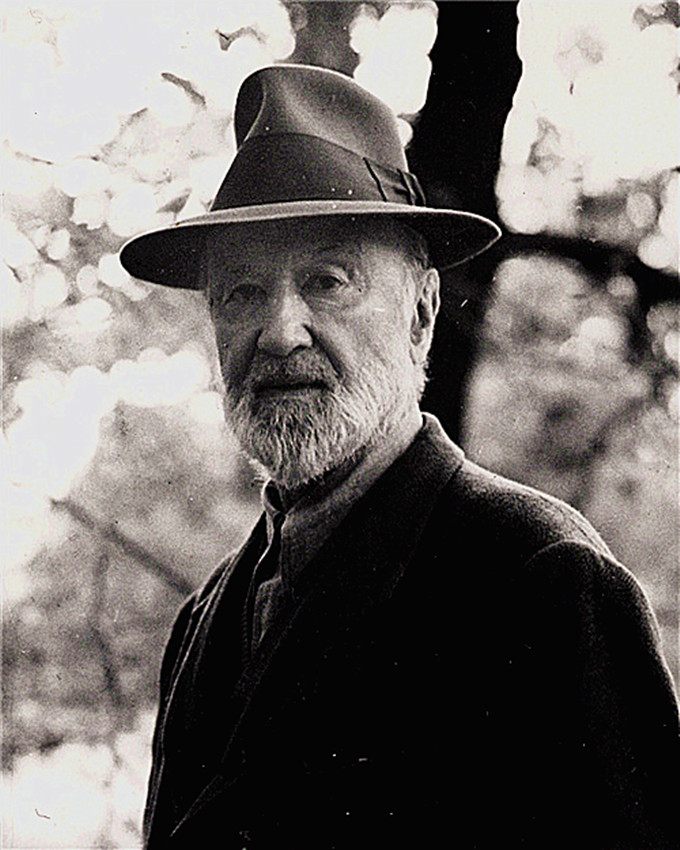 |
|
|
|
| |
查尔斯·艾夫斯(Charles Ives
1874–1954) |
|
|
|
| |
|
|
|
|
| |
Keeping Score 查尔斯·艾夫斯 假日交响曲 音乐会与纪录片
旧金山交响乐
|
|
|
|
| |
MaCharles Ives holiday Symphony concert and documentary
San Francisco Symphony
|
|
|
|
| |
美国作曲家查尔斯·艾夫斯(Charles
Ives)创作的《假日交响曲》(Holidays
Symphony)是20世纪之交新英格兰的一幅令人难忘的音乐肖像,时而伤感,时而混乱。迈克尔·蒂尔森·托马斯探索了忠诚的儿子和商人艾夫斯对音乐特立独行的艾夫斯的谜,后者让听众面对他们对音乐可能是什么理解。拍摄地点在新英格兰和纽约。 |
|
|
|
| |
旧金山交响乐团(San Francisco
Symphony)的艾夫斯假日交响音乐会(Ives' Holidays Symphony)全长,American composer
Charles Ives created his Holidays Symphony as a haunting sonic portrait
of New England at the turn
of the 20th century, at turns sentimental and
chaotic. Michael Tilson Thomas explores the riddle of Ives the loyal son
and businessman versus Ives the musical maverick who made listeners
confront their understanding of what music could be. Filmed on location
in New England and New York City. |
|
|
|
| |
|
|
|
|
| |
音乐历史上的今天
1931年7月4日,在反传统的《节日交响曲》(Holidays Symphony)的“7月4日”乐章中,查尔斯.艾夫斯(Charles
Ives)指示他的誊写员:“请别改动任何内容!所有错误的音符都是正确的。”
秉性孤独的查尔斯。艾夫斯(Charles Ives
1874–1954)是本世纪早期优雅的美国音乐传统中的一个完全的例外;他是所有音乐史上那些粗犷的个人主义者中最引起人们争论者之一。
由于他是康涅狄格州丹伯里的一个军乐队队长的儿子,他自幼就和音乐建立了亲密的关系。他父亲不是一个一般的、城镇的军乐队队长,而是对新奇的音响结合有异常的兴趣和对实验有特殊能力的人。他曾尝试着在钢琴上模仿教堂的钟声多而且曾设法在一些乐器上奏出四分之一的音。他把他的军乐队分成一些小组,让它们使用圣歌风格的对唱方式(antiphonal)和交叠方式(overlapping)演奏许多不同的乐曲。他鼓励儿子查尔斯在钢琴上进行不协和音的试验,并常常叫家人一同在一个调上唱一支熟悉的曲子而他却在另一个调上进行伴奏。
查尔斯作为音乐学生进入耶鲁大学,接受了传统的训练,但是他毕业后却去纽约从事保险业工作,而且。直到他成为一个事业发达的富商之前,只是把作曲作为一种业余爱好。
由于艾夫斯没有作过任何努力以使他的作品上演,所以实际上到了三十年代当一小部分音乐家开始了解这位富有灵感的业余作曲家时,他才开始出名。1927年在纽约演奏了他的第四交响曲的两个乐章,四年之后,在欧洲演出了他的一首管弦乐作品《假日》(Holidays),1939年他的钢琴作品《和谐奏鸣曲》(Concord
Sonata)在纽约与听众见面。从那时起,关于艾夫斯的传说越来越多了。因为广大公众的想象被这样一个念头捉住了:一个“商人——作曲家——隐居者”写出了如此复杂和不协和的音乐。
1947年,他昀一首差不多在二十年前所创作的第三交响曲使他获得了普利策奖金,1955年,他去世后的第二年,出版了一部他的详细的传记和对他的作品进行分析研究的著作
。1
965年,他的第四交响曲在纽约最终获得了全曲演出的机会,因为洛克菲勒基金会给了一笔资助金以支付为演奏这一极为困难的乐曲所需要进行特别排练的费用才使这次演出成为可能。
1974年,艾夫斯的百年诞辰重新引起了人们对这位作曲家的兴趣。这_年在美国全国各地举办了音乐会,发行了大量的新唱片和录音材料,出版了数种关于艾夫斯和他音乐的专门著作以及无数的纪念他和评价他的贡献的文章。
今日视频:1、旧金山交响乐团
演奏查尔斯·艾夫斯
假日交响曲 音乐会与纪录片
;2、莫莉·莫科斯基演奏艾夫斯《第二钢琴奏鸣曲》(和谐)。 |
|
|
|
| |
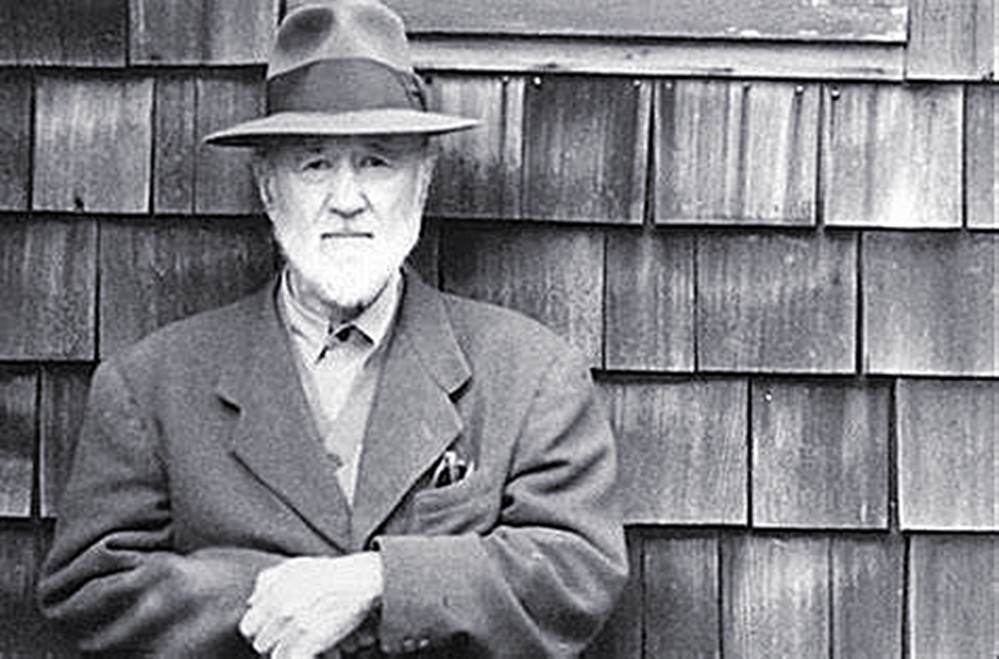 |
|
| |
查尔斯·艾夫斯(Charles
Ives)在老家康涅狄克州。 |
|
|
|
| |
我强烈地感到一些重大的基本问题应该更多地在所有的公共会议中加以讨论,并且也要在中学和大学中加以讨论。不仅学生们,而且全体教员都应该对关系到今天世界上一切国家、一切民族的重大间题认真地进行思考和采取行动。不要让那些政治家们包办一切和垄断整个的发言权。
我曾常常听人说,音乐(或者一次音乐会)的作用不是去关心那类的大事。但是我完全不同意这种看法。我认为如果是恰巧需要,如果是出于自然而不是强加给的,那末去关心那类大事正是音乐可做的事情之一——我曾经为此进行过斗争。
——查尔斯·艾夫斯 |
|
|
|
| |
I
feel strongly that some of the major fundamental issues should be
discussed more in all public meetings, but also in schools and
universities.Not only the students but also the faculty should seriously
consider and take action on the major issues that concern all countries
and all peoples in the world today.Don't let the politicians do
everything and monopolize the say.
I've often heard people say that the role of music (or a concert) is not
to care about that kind of big thing.But I totally disagree.I think it
is one of the things that music can do -- I have struggled with -- to
care for that sort of thing, if it happens to be needed, if it is
natural and not imposed.
- Charles ives |
|
|
|
| |
查尔斯·艾夫斯《和谐奏鸣曲》 |
|
|
|
| |
《和谐奏鸣曲》(1909-1915)是他的作品中一首有代表性的作品。这首大型乐曲,乍听之下,很可能因为它的冗长、喧闹和密集的音符而使人们感到头晕目眩。在总谱各页之间,风格上存在着惊人的不同,而且乐曲的进行使人感到完全不可预测。探讨这一乐曲的最好办法是借助它的标题和作曲家本人所作的文字说明。
这一奏鸣曲的第一乐章是对埃默森(Emerson)——艾夫斯笔下的英雄人物之一的描写。艾夫斯称他为“美国的在精神世界中最深入的探索者”并把关于埃默森的写作风格称作是“建立在某一主题的一系列特殊方面的总的统一之上,而不是建立在它的表现方式的一致性之上。当各种思想涌上他的心头时,他把它们充塞九霄之上,必要时把它们密集在一起,而很少首先沿着现实的地面加以排列。”这段话也适用于艾夫斯自己的奏鸣曲。
这一乐章的开始是两行反向进行的不协和的对位旋律线。左手的音符构成了一个在全曲中从头至尾使用的主题。稍后,贝多芬第五交响曲的那个非凡的主题(略加掩饰)出现了。后一主题,同样也贯穿在全曲之中。艾夫斯告诉人们说,这个主题表示:
“……埃默森启示中的心灵消息即那一敲击着必将被打开的神的玄秘之门的人类灵魂——和人将成为神学者。”
这一乐曲的进行不分小节,没有轻重律(这种略去小节和拍子是有目的的,因为音乐所涉及的是埃默森的与其诗歌成为对比的散文),也没有明确的调性。这是一首散漫的、随想式的乐曲,偶然几处再现两个主导动机。乐曲很快就在它的不协和性和力度方面开始狂放起来,其中一个特别紧缩的和弦被解释为“只是埃默森要求作一次超自然旅行的许多突然发出的呼喊之一。”
这种二度音的和声结构代表了这一乐曲中很多连串音(tone
cluster)的特点。接着一段较安静的乐段出现了,其中数页总谱的写法与德彪西或拉威尔相似,在低音部有着一个持续音,同时左手上广泛散开的琶音衬托着右手上一些断断续续的旋律。在一些“补天思想’’(heaven-filling
thoughts)的乐节与充满了沉思的大段音乐交替出现的同时,所引用的贝多芬那一主题变得愈加气势逼人。这一乐章的末尾是纯粹的印象派风格,有着一个建立在减五庋的持续音,同时上边的各个音以极弱的pppp力度奏出。
在第二乐章中,表现出新英格兰文化的另一面。这一乐章的标题是“霍桑”。艾夫斯解释说,在这乐章中他不是在详细论述这位《红字》一书作者的犯罪心理方面,而是试图暗示霍桑的在半似儿童、半似仙女的各种幻觉王国中的那种困惑的、怪诞的奇遇。这一乐章具有谐谑曲的情调,要求演奏者有很高的技巧。开始部分使人想起拉威尔的《斯加布》的音型法。一些杂乱的切分节奏经过句(可能是一些以前从来未被用过记谱符号)与用一块“14
3/4英寸长,其重量足可以不必击奏即能将琴键压下的木板,来奏出的乐句交替出现。在这一令人眩晕的乐章的中间部分,突然引用了一个朴素的古老赞歌,而且作曲家的说明要求演奏出来象有时在剧烈的暴风雨刚刚过去后听到从远处山头上传来的歌声一样。稍后出现了兴高采烈的进行曲调。这是对流行曲调实际照搬即完全按照它们原来的和弦和拍子来引用,结果产生了一种几乎是令人不能想象的与乐曲总的基调极不协和的矛盾。
这首奏鸣曲的第三乐章是一个缓慢的乐章,叫做《阿尔科特一家》(The
Aleotts),它让人们回想起那一时期朴素的、充满家庭乐趣的生活。这是最平易近人的一个乐章,而且所附带引用的一些福音赞歌、客厅歌曲(Parlor
song)和《新娘来了》歌,使这一乐章形成了一个具有内聚力的整体。这一乐章在贝多芬一个C大调主题的气势高昂酌陈述部中结束。
最后一个乐章《萨劳》描写的是景与人。这一乐章附有一个详细的关于这位沃尔登的哲学家一天生活日程的说明。在将近结束时,当一个持续音型开始和在上面听到了基本旋律主题的一些更缓慢,更有表情的变体出现时,又恢复到了第一乐章中那种随想曲式的风格。在最后结束时,再次出现了那个贝多芬的主题。 |
|
|
|
| |
《Piano
Sonata No.2, Concord, Mass》
by Charles Ives
The Harmony Sonata (1909-1915) is a representative work of his.This
large piece of music may, at first glance, be dizzying because of its
long, noisy, dense notes.There are striking stylistic differences
between the pages of the score, and the movement feels entirely
unpredictable.The best way to explore this piece of music is with the
help of its title and the words of the composer himself.
The first movement of the sonata is a reference to Emerson, one of
Ives's heroes.Ives called him "America's deepest explorer in the
spiritual world" and called Emerson's writing style "based on the
general unity of a particular set of aspects of a subject rather than on
the uniformity of its expression.When thoughts came to him, he filled
them to the top of his lungs, and crowded them together when necessary,
and seldom lined them up first along the ground of reality.This also
applies to Ives' own sonata.
The movement begins with a discordant contrapuntal melodic line of two
lines going backwards.The notes of the left hand form a theme used
throughout the song.Later, the extraordinary (slightly disguised) theme
of Beethoven's Fifth Symphony emerges.The latter theme also runs through
the whole song.Ives told people that the theme says:
"...The message of the heart in Emerson's revelation is that the human
soul that knocks at the secret door of the god that must be opened --
and man shall be theologian."
It is performed without measure, without weight (this omission of
measure and beat is purposeful, for the music is concerned with
Emerson's prose, which contrasts with his poetry), and without clear
tone.It is a loose, dreamy piece that occasionally recreates two
dominant motives.The music soon begins to go wild in its dissonance and
intensity, with a particularly constricted chord interpreted as "just
one of the many sudden cries of Emerson for a supernatural journey."
The harmonic structure of this second tone represents the
characteristics of many tone clusters in this piece of music.A quieter
passage followed, in which several pages of the score were written in a
manner similar to Debussy or Ravel, with a sustained note in the bass
and scattered arpeggios on the left hand setting off some broken
melodies on the right.The reference to Beethoven gets more menacing as
some "heaven-filling thoughts" alternate with long, brooding pieces.This
movement has a pure Impressionistic ending with a continuous sound built
on five subtraction. Each note above it is played with a very weak PPPP
force.
In the second movement, there is another aspect of New England
culture.The movement is entitled "Hawthorne".Ives explains that in this
movement he is not elaborating on the criminal psychology of the Author
of the Scarlet Letter, but is trying to allude to Hawthorne's perplexing
and bizarre adventures in his realm of half-child-like, half-fairy
illusions.This movement has the sentiment of the scherzo, which requires
the player to have very high skill.The beginning is reminiscent of
ravel's Scabior.A jumble of syncopated rhythms passes through a sentence
(perhaps some notation that has never been used before) and is
punctuated by a piece of wood "14 3/4 inches long, heavy enough to hold
down the keys without percussion."In the middle of this dizzying passage
a simple old hymn was suddenly invoked, and the composer's instructions
demanded that it be played as if a song were sometimes heard from a
distant hill-top, just after a violent storm had passed.Later, there was
an upbeat tune.This is an actual reproduction of the popular tunes in
their original chords and beats, and the result is an almost
unimaginable contradiction with the general tone of the music.
The sonata's third movement, a slow movement called "The Aleotts," is a
reminder of The simple, family-fun life of that period.It's one of the
most approachable, and the accompanying references to Gospel hymns,
Parlor songs and "Here comes the Bride" make it a cohesive whole.The
movement ends in Beethoven's imposing statement of a Theme in C major.
The last movement, Sarao, is about scenes and people.The piece is
accompanied by a detailed description of walden's day.Towards the end,
when a continuous pattern begins and some slower, more expressive
variations of the basic melodic theme are heard above, the style reverts
to that of the first movement.At the end, the Beethoven theme reappears. |
|
|
|
| |
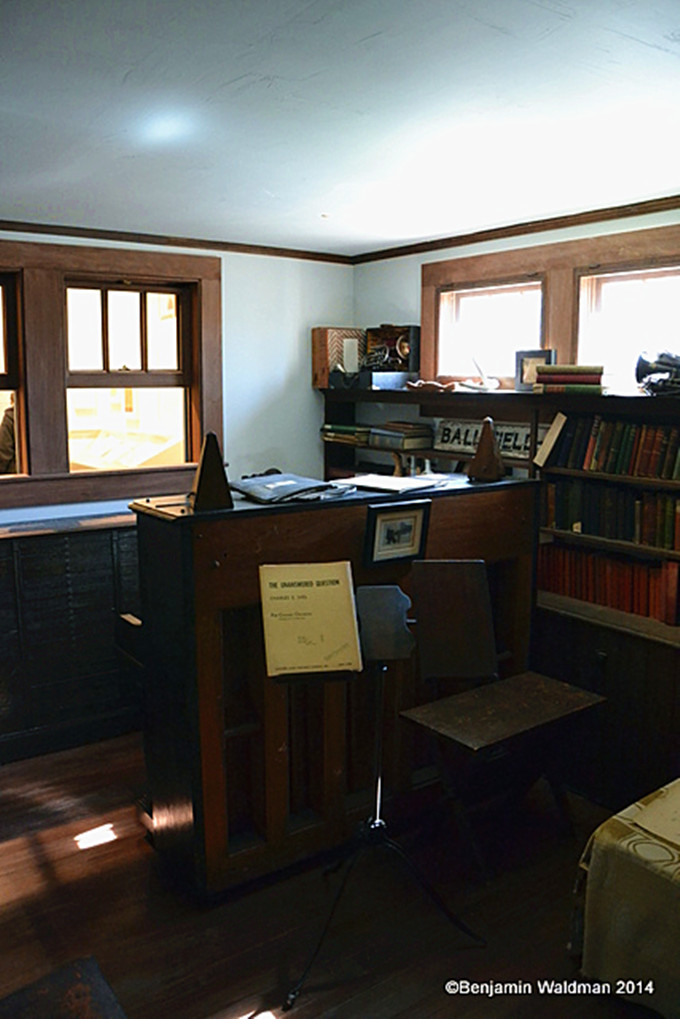 |
|
| |
查尔斯·艾夫斯(Charles
Ives)在老家康涅狄克州的工作室。 |
|
|
|
| |
1954年艾夫斯去世后,他的遗孀将他的版税捐给了美国艺术与文学学院,以获得查尔斯艾夫斯奖,这是一项为年轻作曲家设立的奖学金。当艾夫斯的孙子查尔斯·艾夫斯·泰勒(Charles
Ives Tyler)决定出售他们在康涅狄格的家时,他联系了许多可能对保存他祖父的遗产感兴趣的组织。
最终,泰勒选择了美国艺术与文学学院(American Academy of Arts and
Letters)来接管他祖父的工作室,并在曼哈顿的总部重新建造了它。在与一个小型展览一起展出之前,超过3000件文物被分类和修复。艾夫斯工作室现在是学院的永久展览,从3月6日到4月12日,从5月22日到6月15日再次对公众开放。 |
|
|
|
| |
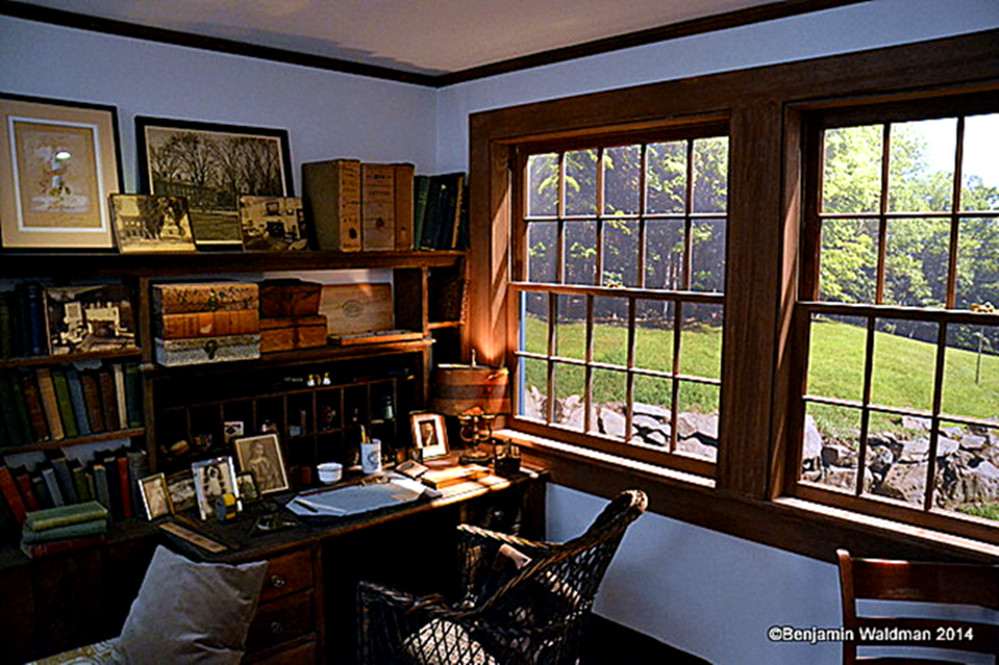 |
|
| |
查尔斯·艾夫斯(Charles
Ives)在老家康涅狄克州的工作室后来搬到了纽约曼哈顿的总部重新建造了它,成为了一个对公众开放的艾夫斯展览馆。 |
|
|
|
| |
When Ives
died in 1954, his widow bequeathed the royalties from his music to the
American Academy of Arts and Letters for the Charles Ives Prize, a
scholarship for young composers. When Ives grandson, Charles Ives Tyler,
decided to sell the family’s Connecticut home, he reached out to a
number of organizations who might be interested in preserving his
grandfather’s legacy.
Ultimately, Tyler
selected the American Academy of Arts and Letters to take his
grandfather’s studio, and recreate it in their Manhattan headquarters.
Over 3,000 objects were cataloged and restored before being put on
display alongside a small exhibit. The Ives studio is now a permanent
exhibit at the Academy and is open to the public from March 6 to April
12 and again from May 22 through June 15. |
|
|
|
| |
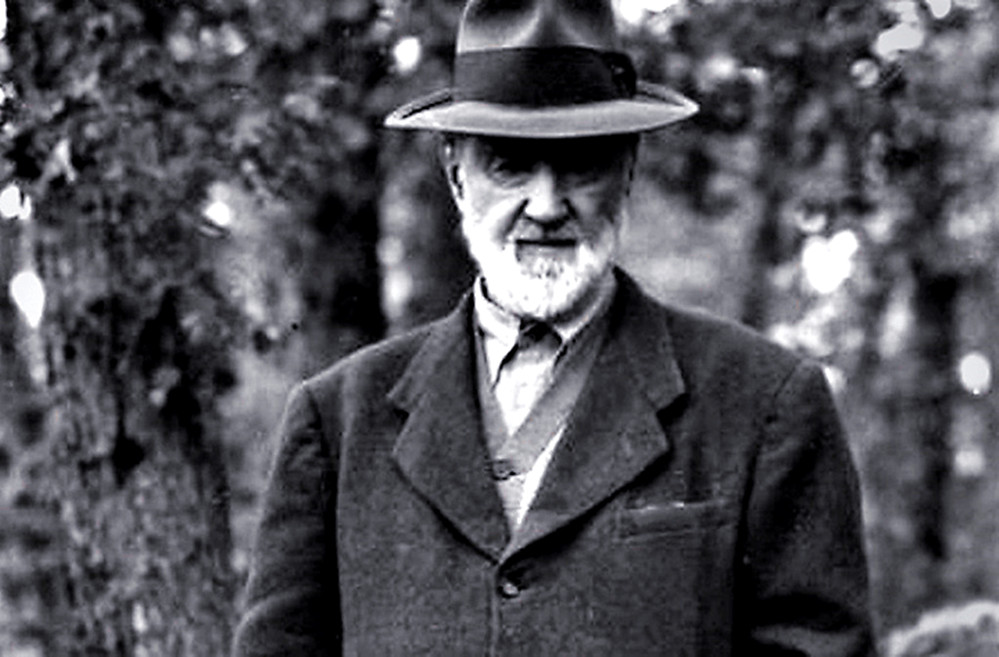 |
|
| |
查尔斯·艾夫斯(Charles
Ives)经常是冬天在纽约工作,夏天在老家康涅狄克州工作。 |
|
|
|
| |
|
|
|
|
| |
Today in the
history of music
On July 4, 1931, in the "Fourth of July" movement of the non-traditional
Holidays Symphony, Charles Ives instructed his transcritor: "Please do
not alter anything!All the wrong notes were right."
The solitary Charles.Charles Ives (1874 -- 1954) was a complete
exception to the elegant American musical tradition of the early part of
this century;He was one of the most controversial of all the rugged
individualists in the history of music.
As the son of a military band leader from Danbury, Connecticut, he
developed a close relationship with music from an early age.His father
was not an ordinary town bandleader, but a man with an unusual interest
in the combination of novelty and sound and a special ability to
experiment.He tried to imitate church bells on the piano and managed to
make a quarter of a note on some instruments.He put his military band is
divided into groups, let them use way of singing hymns style
(antiphonal) and overlapping (overlapping) play music in many different
ways.He encouraged his son, Charles, to experiment with dissonance on
the piano, often asking the family to sing a familiar tune on one while
he accompanied them on another.
Charles went to Yale as a music student and received traditional
training, but after graduating he went to New York to work in insurance,
and.Composing music was a hobby until he became a wealthy businessman.
Because Ives made no effort to put his work on the stage, he did not
actually become famous until the 1930s, when a small group of musicians
began to get to know the inspirational amateur composer.Four years
later, his orchestral work "Holidays" was performed in Europe, and his
piano work "Concord Sonata" was presented in New York in 1939.Since
then, the ives legend has grown.Because the public imagination was
caught up in the idea that a "trader-songwriter-recluse" had written
such complex and incongruous music.
In 1947, the third Symphony, which he had composed almost two decades
earlier, won him the Pulitzer Prize, and in 1955, the year after his
death, a detailed biography and analysis of his work were published.In
1965, his Fourth Symphony was finally given a full performance in New
York, made possible by a grant from the Rockefeller Foundation to pay
for the special rehearsals needed to play this extremely difficult
piece.
Ives's centenary in 1974 revived interest in the composer.Concerts were
held throughout the United States, numerous new records and recordings
were released, several specialized books on Ives and his music were
published, and numerous articles commemorated and evaluated his
contributions.
Video of the day: 1. San Francisco Symphony Performing Charles Ives
Holiday Symphony Concert and documentary; 2.Molly Moskowski on Ives'
Second Piano Sonata (Concord Sonata). |
|
|
|
| |
|
|
|
|
| |
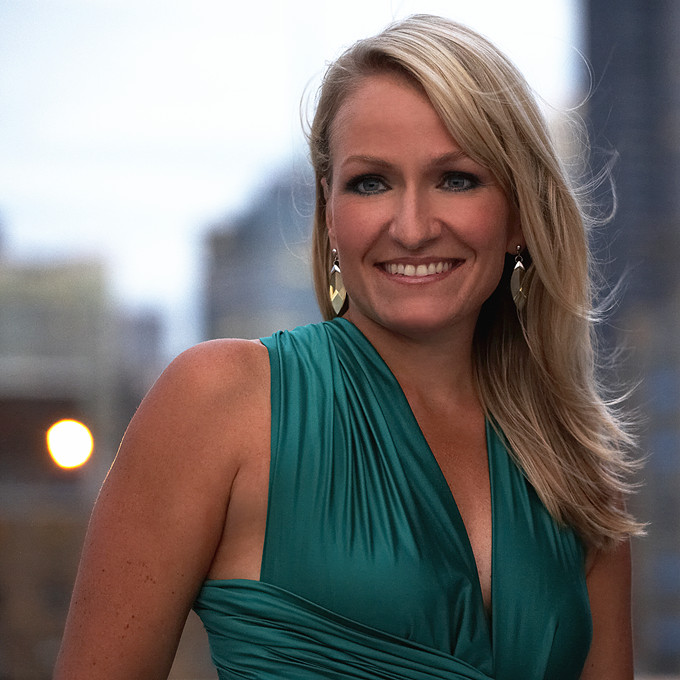 |
|
| |
莫莉·莫科斯基(Molly Morkoski) |
|
|
|
| |
钢琴家莫莉·莫科斯基(Molly
Morkoski)曾在美国各地担任独奏者和合作艺术家美国、欧洲、加勒比海和日本。她的表演被《纽约时报》认为是“强大的,详细的,细致入微的……美丽的蚀刻…一个精力充沛、专注的球员…而《波士顿环球报》则称她“杰出”。2007年,她在卡内基音乐厅的斯特恩礼堂/佩雷尔曼舞台上进行了独奏,演奏了贝多芬的《杂谈曲》,作品126。作为独奏者,她喜欢支持巴赫的《哥德堡变奏曲》、艾夫斯的《和谐奏鸣曲》、梅辛的《关于上帝的故事》等当代大师作品,以及约翰·哈比森、史蒂文·麦基和加布里埃拉·莱娜·弗兰克等作曲家的新作品。莫莉·莫科斯基曾在美国许多著名的场馆演出,包括威尔和赞克尔音乐厅、爱丽丝·塔利音乐厅、默金音乐厅、泊松鲁日音乐厅、波士顿加德纳博物馆和乔丹音乐厅、圣路易斯鲍威尔音乐厅、费城基梅尔中心和华盛顿特区史密森学会。在国际上,她曾在圣多明戈的国立Teatro
Nacional,斯特拉斯堡音乐学院,美国驻巴黎和尼斯的大使馆,以及日本的三tory音乐厅表演。她曾与罗利、阿什维尔、北卡罗来纳大学教堂山分校、塔斯卡卢萨交响乐团和摩拉维亚爱乐乐团合作演出协奏曲。
莫莉·莫科斯基是Meme、Open
End和指数乐团的成员,并与一些当今的顶尖音乐家合作,包括Dawn Upshaw、John Adams、John
Corigliano和David
Robertson。她曾与纽约爱乐乐团、大都会歌剧院乐团、圣路易斯交响乐团、新世界交响乐团、窥乐乐团、布鲁克林室内乐协会和俄耳甫斯室内乐乐团合作演出。她的首张个人CD,
Threads,由奥尔巴尼唱片公司发行,受到了评论界的好评,她还享受了许多其他的唱片合作,最近的一张是专为Gabriela Lena
Frank的钢琴音乐而制作的CD。莫莉·莫科斯基(Molly
Morkoski)是去巴黎的富布赖特(Fulbright)学者,她在当代间乐团(Ensemble intercontemporary
ain)当学徒。她获得过许多奖项,拥有北卡罗来纳大学教堂山分校、印第安纳大学布卢明顿分校和纽约州立大学石溪分校的学位。她曾在多所大学上过大师班,并在茱莉亚学院预备班、纽约青年交响乐团、纽约州立大学石溪分校、哥伦比亚大学等学校担任过室内乐教练。她目前是纽约市立大学莱曼学院的钢琴副教授。
莫莉也很高兴地宣布,她最近被邀请加入施坦威&儿子的艺术家花名册。
|
|
|
|
| |
|
|
|
|
| |
 |
|
| |
莫莉·莫科斯基(Molly Morkoski) |
|
|
|
| |
Pianist Molly
Morkoski has performed as soloist and collaborative artist throughout
the U.S., Europe, the Caribbean, and Japan. Her playing has been
recognized by The New York Times as “strong, profiled, nuanced . . .
beautifully etched . . . . an energetic and focused player . . . . with
flexibility and warmth . . .” and The Boston Globe called her
“outstanding.” In 2007, she made her solo debut in Carnegie Hall’s Stern
Auditorium/Perelman Stage playing Beethoven’s Bagatelles, Op. 126. As a
soloist, she enjoys championing the classics, such as Bach’s Goldberg
Variations and contemporary masterworks such as Ives’ Concord Sonata and
Messiaen’s Vingt regards sur l’enfant-Jésus, as well as premiering new
works of current composer colleagues, such as John Harbison, Steven
Mackey, and Gabriela Lena Frank. Molly Morkoski has performed in many of
the country’s prestigious venues, including Weill and Zankel Halls,
Alice Tully Hall, Merkin Hall, (Le) Poisson Rouge, Boston’s Gardner
Museum and Jordan Hall, St. Louis’ Powell Hall, Philadelphia’s Kimmel
Center, and Washington D.C.’s Smithsonian. Internationally, she has
performed at the Teatro Nacional in Santo Domingo, the Strasbourg
Conservatoire, the U.S. Embassies in Paris and Nice, and in Japan’s
Suntory Hall. She has performed concertos with the Raleigh, Asheville,
University of North Carolina at Chapel Hill, and Tuscaloosa Symphonies,
and with the Moravian Philharmonic Orchestra.
An avid chamber
musician, Molly Morkoski is a member of Meme, Open End, and Exponential
Ensembles and has collaborated with some of today’s leading musicians,
including Dawn Upshaw, John Adams, John Corigliano, and David Robertson.
She has performed with the New York Philharmonic Ensembles, Metropolitan
Opera Orchestra, St. Louis Symphony, New World Symphony, Speculum
Musicae, Brooklyn Chamber Music Society, and Orpheus Chamber Orchestra.
Her debut solo CD, Threads, was released on Albany Records, to critical
acclaim, and she has enjoyed numerous other recording collaborations,
most recently Compadrazgo a disc dedicated to the piano music of
Gabriela Lena Frank. Molly Morkoski was a Fulbright Scholar to Paris,
where she was an apprentice with the Ensemble Intercontemporain. The
recipient of many awards, she holds degrees from UNC Chapel Hill,
Indiana University Bloomington, and SUNY Stony Brook. She has given
masterclasses at numerous universities and has served as a chamber music
coach for programs at Juilliard Pre-College, New York Youth Symphony,
SUNY Stony Brook, Columbia and more. She is currently Associate
Professor of Piano at CUNY-Lehman College in the Bronx.
Molly is also delighted to announce that she was recently invited to
join the Steinway & Sons Artists Roster. |
|
|
|
| |
|
|
|
|
| |
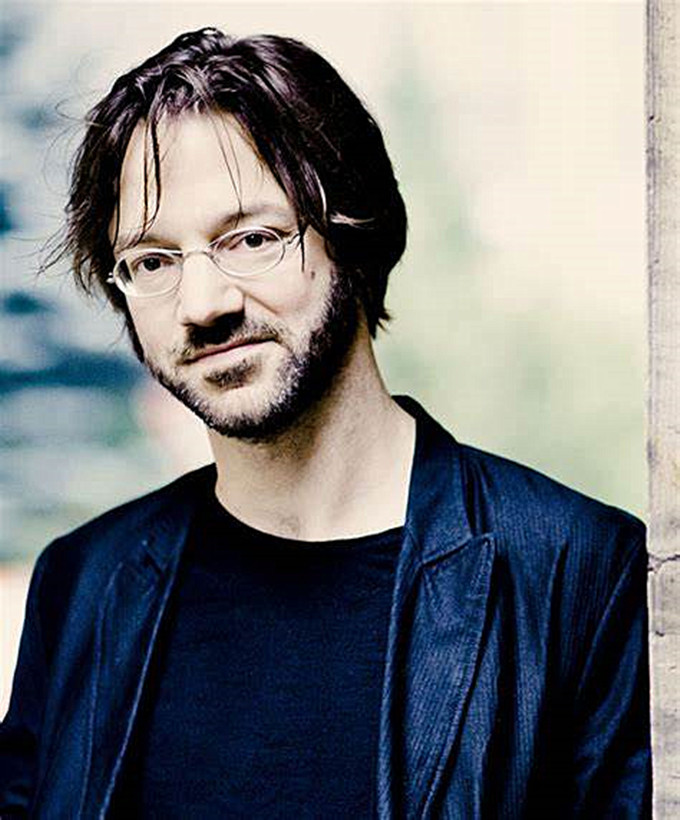 |
|
| |
安德烈·德里德(André
de Ridder ) |
|
|
|
| |
安德烈·德里德指挥家安德烈·德里德是一位德国古典音乐指挥家,主要在英国工作。
指挥安德烈德里德产生了记录在非洲,有策划创新的演唱会在墨尔本,伦敦、哥本哈根、柏林和赫尔辛基(作为音乐的艺术总监新星赫尔辛基的节日),与他的音乐家和genre-defying委托项目“集体s
t r g z e。他已经形成的关系与不同的艺术家包括Kaija Saariaho,
Uri凯恩,布莱斯Dessner,米歇尔•范德Aa和达蒙Albarn,并执行在BBC逍遥,冰岛电波,悉尼,荷兰和其他节日。他曾与英国广播公司交响乐团、巴黎交响乐团、悉尼交响乐团、东京大都会交响乐团、纽约爱乐乐团和阿姆斯特丹皇家交响乐团合作。上一季的亮点包括与当代乐团(Ensemble
intercontemporary ain)、洛杉矶爱乐乐团(Los Angeles
Philharmonic)、芬兰广播交响乐团(Finnish Radio Symphony Orchestra)和多伦多交响乐团(Toronto
Symphony Orchestra)的首演。他在荷兰国家歌剧院主持了由彼得•塞拉斯(Peter
Sellars)执导的萨里阿霍(Saariaho)的《唯一的声音依然》(Only the Sound
Remains)的全球首演,后来又在芬兰国家歌剧院重新上演。此前的首映式包括阿尔本的音乐剧作品,多纳查·丹内希的《最后的酒店》,杰拉尔德·巴里的《佩特拉·冯·康德的痛苦的眼泪》,以及范德Aa的《沉没花园》。他与巴里·科斯基合作了柏林歌剧院蒙特韦迪项目,并在丹麦国家歌剧院首演了由卡斯帕·霍尔顿执导的丹尼尔·比纳森的兄弟。2017-18年,他首次登台演出Orquesta
y Coro Nacionales de Espana,并主持了伦敦Spitalfields冬季音乐节。2013年,德利德创立了s t a r
g a z e;从柏林开始运营,并在Volksbuhne剧院建立了一个家,他们的sta r g z e礼物节的特色艺术家有Terry
Riley, Tyondai Braxton, Nils Frahm, Pantha du Prince和Pekka Kuusisto.
.他们定期在巴比肯中心(Barbican Centre)和鲁尔三年展(Ruhrtriennale)演出,并在2015年推出了st ar g a
z
e管弦乐队(orchestral)。当前这一季包括他们在BBC逍遥音乐节的首次演出重新诠释了大卫·鲍伊的作品,以及在巴黎爱乐乐团和纽约的首次演出。安德烈·德·里德(Andre
de Ridder)的唱片包括马克斯·里克特(Max Richter)的《四季重组》(The Four Seasons re作曲,2013
ECHO Klassic award)以及布莱斯·德斯纳(Bryce Dessner)和约翰尼·格林伍德(Jonny Greenwood,
DG)的管弦乐作品。他是《非洲快车》的制作人:In C
Mali(越轨唱片),这是在他和Albarn去马里的巴马科和他的非洲快车项目之后,在那里de Ridder和当地的音乐家以及包括Brian
Eno和Albarn在内的西方艺术家一起录制了Riley的C音。他在柏林接受教育,在利奥波德·哈格(Leopold
Hager)和科林·戴维斯(Colin Davis)手下的维也纳和伦敦音乐学院学习。 |
|
|
|
| |
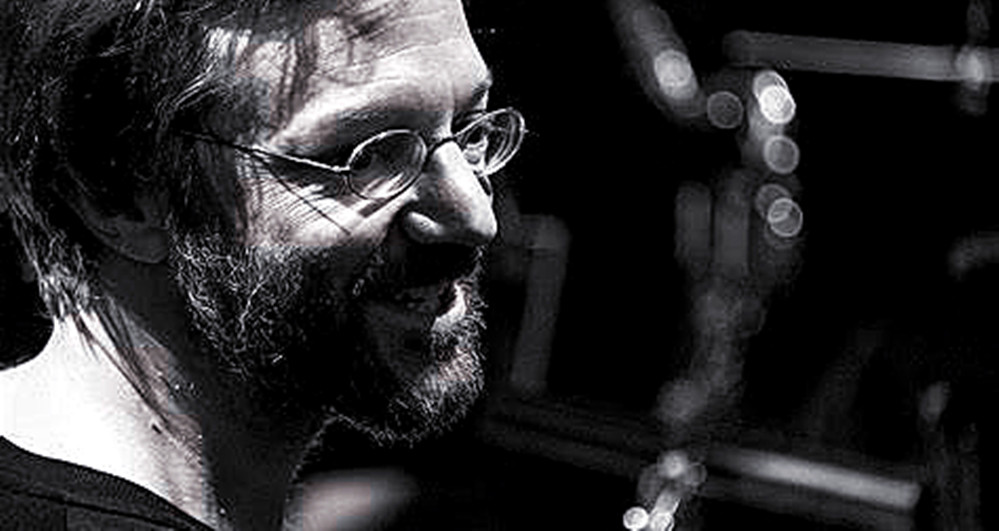 |
|
| |
安德烈·德里德(André
de Ridder ) |
|
|
|
| |
André de Ridder
Conductor
André de Ridder is a German conductor of classical music mainly
working in Great Britain.
Conductor André de Ridder has produced records in Africa, has
curated innovative concert series in Melbourne, London,
Copenhagen, Berlin, and Helsinki (as artistic director of the
Musica nova Helsinki Festival), and commissioned genre-defying
projects with his musicians’ collective s t a r g a z e. He has
formed relationships with diverse artists including Kaija
Saariaho, Uri Caine, Bryce Dessner, Michel van der Aa, and Damon
Albarn, and performs at the BBC Proms, Iceland Airwaves, Sydney,
Holland, and other festivals. He has worked with the BBC
Symphony Orchestra, Orchestre de Paris, Sydney Symphony
Orchestra, Tokyo Metropolitan Symphony Orchestra, New York
Philharmonic, and Amsterdam’s Royal Concertgebouw Orchestra.
Last season’s highlights included debuts with the Ensemble
Intercontemporain, Los Angeles Philharmonic, Finnish Radio
Symphony Orchestra, and Toronto Symphony Orchestra. He led the
world premiere of Saariaho’s Only the Sound Remains at Dutch
National Opera, directed by Peter Sellars, which he later
revived at Finnish National Opera. Previous premieres include
Albarn’s musical theater works, Donnacha Dennehy’s The Last
Hotel, Gerald Barry’s The Bitter Tears of Petra von Kant, and
van der Aa’s The Sunken Garden. He collaborated with Barrie
Kosky on a Monteverdi project at Komische Oper Berlin and makes
debuts at Danish National Opera with the premiere of Daniel
Bjarnason’s Brothers, directed by Kasper Holten. 2017–18 he
makes his Orquesta y Coro Nacionales de España debut and curates
Spitalfields Music’s Winter Festival in London. In 2013 Mr. de
Ridder founded s t a r g a z e; operating from Berlin and
establishing a home at the Volksbühne theater, their s t a r g a
z e presents festival has featured artists like Terry Riley,
Tyondai Braxton, Nils Frahm, Pantha du Prince, and Pekka
Kuusisto. . They appear regularly at the Barbican Centre and at
Ruhrtriennale, and in 2015 unveiled s t a r g a z e orchestral.
The current season included their BBC Proms debut reinterpreting
David Bowie’s work, and debuts at Paris Philharmonie and in New
York City. André de Ridder’s discography includes Max Richter’s
The Four Seasons Recomposed (DG, 2013 ECHO Klassic award) and
orchestral music by Bryce Dessner and Jonny Greenwood (DG). He
was producer on Africa Express Presents: In C Mali
(Transgressive Records), which followed a trip to Bamako, Mali,
with Albarn and his Africa Express project, where de Ridder
initiated a recording of Riley’s In C with local musicians and
western artists including Brian Eno and Albarn. He was educated
in Berlin and studied at the music academies of Vienna and
London, under Leopold Hager and Colin Davis. |
|
|
|
| |
|
|
|
|
| |
|
|
|
|
| |
【钢琴】莫莉·莫科斯基Molly
Morkoski, 艾夫斯: 第二钢琴奏鸣曲, Ives: Piano Sonata No.2,
Concord, Mass |
|
|
|
| |
『Baroque Odyssey』指挥William Christie Les Arts Floriss |
|
|
|
| |
未得原作者编者授权严禁转载www.mt77.com任何内容 |
|
|
|
|
|
|
|
|
|
|
|
|
|
|
.png)

